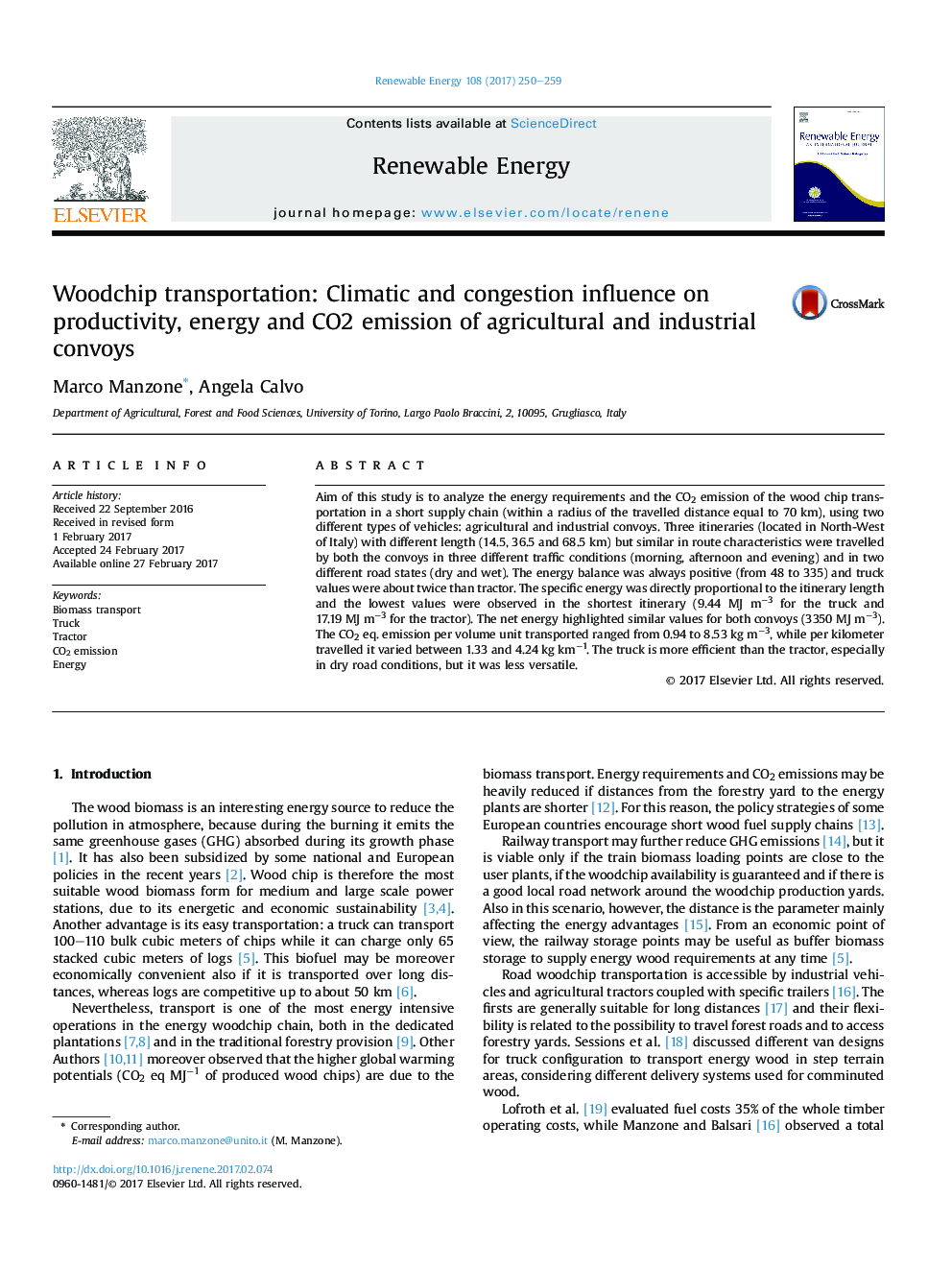| Article ID | Journal | Published Year | Pages | File Type |
|---|---|---|---|---|
| 4926510 | Renewable Energy | 2017 | 10 Pages |
Abstract
Aim of this study is to analyze the energy requirements and the CO2 emission of the wood chip transportation in a short supply chain (within a radius of the travelled distance equal to 70 km), using two different types of vehicles: agricultural and industrial convoys. Three itineraries (located in North-West of Italy) with different length (14.5, 36.5 and 68.5 km) but similar in route characteristics were travelled by both the convoys in three different traffic conditions (morning, afternoon and evening) and in two different road states (dry and wet). The energy balance was always positive (from 48 to 335) and truck values were about twice than tractor. The specific energy was directly proportional to the itinerary length and the lowest values were observed in the shortest itinerary (9.44 MJ mâ3 for the truck and 17.19 MJ mâ3 for the tractor). The net energy highlighted similar values for both convoys (3350 MJ mâ3). The CO2 eq. emission per volume unit transported ranged from 0.94 to 8.53 kg mâ3, while per kilometer travelled it varied between 1.33 and 4.24 kg kmâ1. The truck is more efficient than the tractor, especially in dry road conditions, but it was less versatile.
Related Topics
Physical Sciences and Engineering
Energy
Renewable Energy, Sustainability and the Environment
Authors
Marco Manzone, Angela Calvo,
